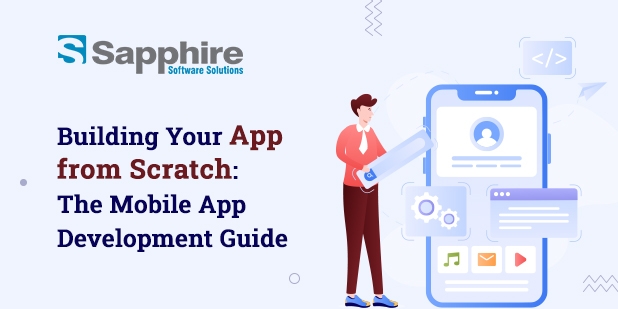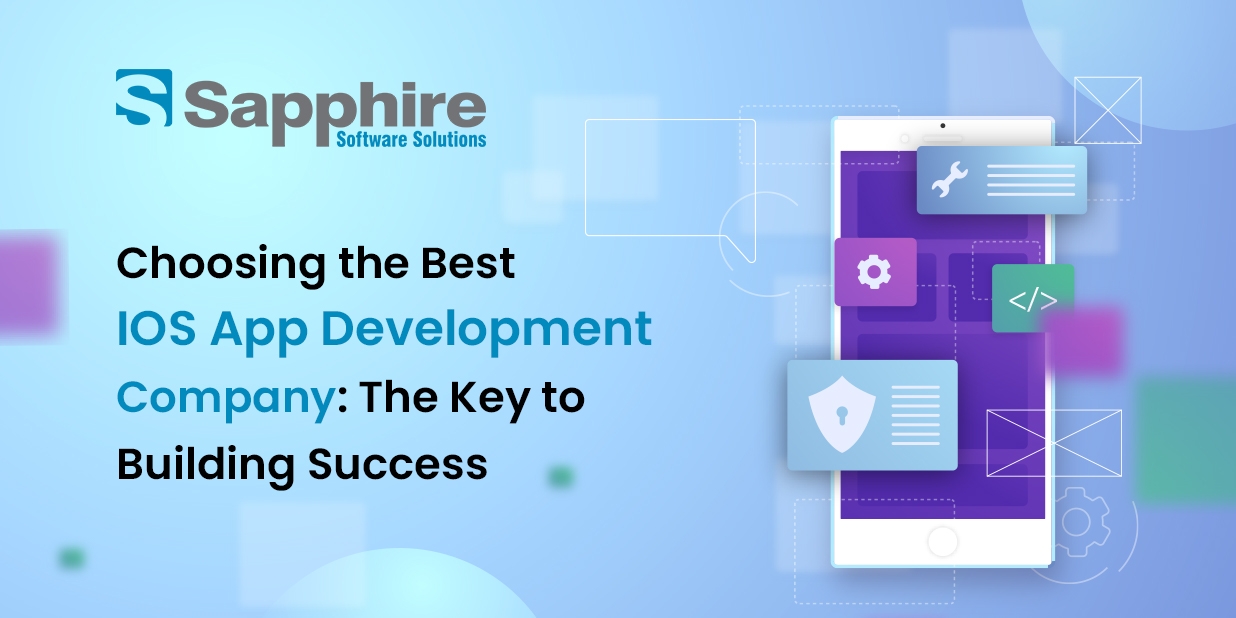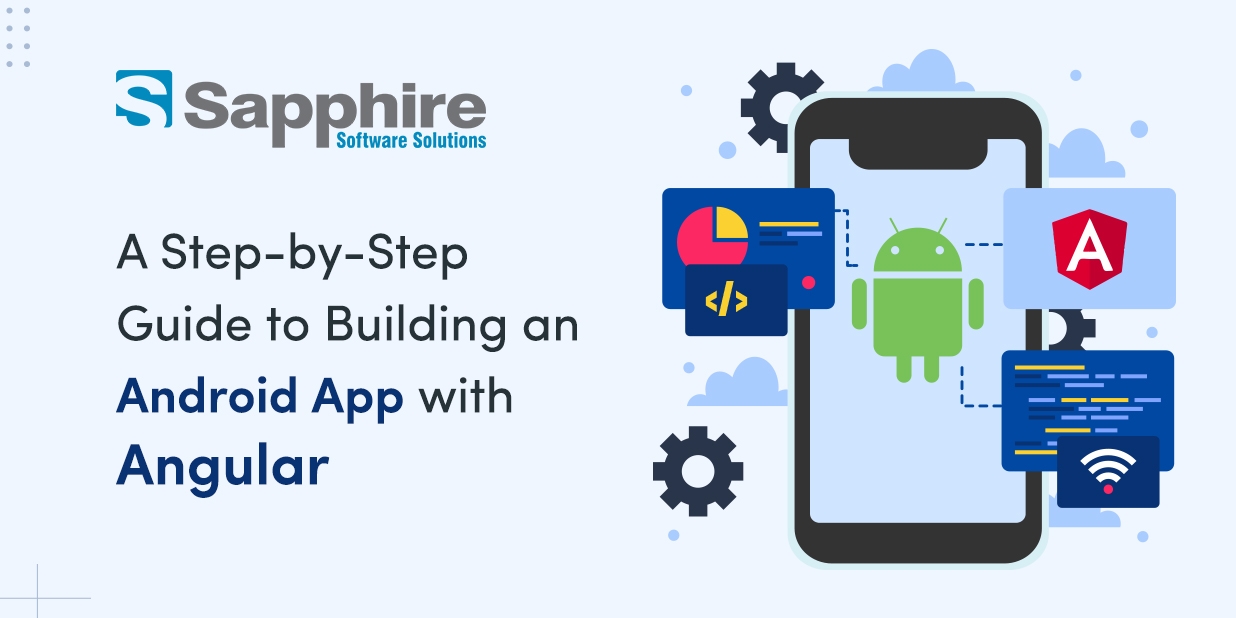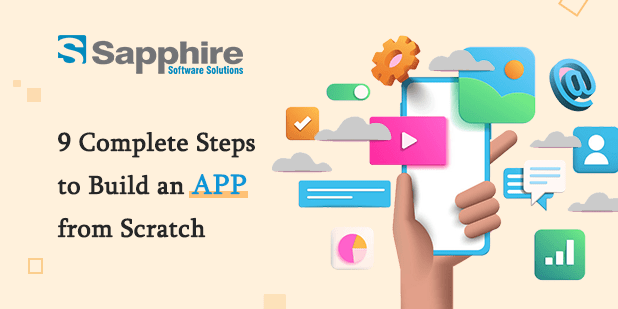Mobile application development creates software applications for mobile devices such as smartphones and tablets. Mobile app development aims to provide users with a fluid and seamless experience when using apps on their mobile devices.
Mobile applications can be designed to perform a variety of functions, including entertainment, communication, productivity, and e-commerce, on a variety of platforms including iOS, Android, and Windows.
The phases of building a mobile application are typically concept and planning, design, development, testing, deployment, and maintenance. Each step of the development process requires specialized knowledge and skills to ensure that the application functions properly and meets the needs and preferences of its users. Hire Mobile App Developers in USA for your upcoming project.
Mobile App Development Guide:-
In the modern world mobile applications have become indispensable for our daily existence. From entertainment to education, mobile applications have changed how we interact with our mobile devices. If you want to build your mobile app from scratch, this guide will give you all the information you need to get started.
1. Defining your mobile app idea
Before you start developing your mobile app, you need to define its concept. This includes identifying the app’s purpose, intended audience, and unique features that will set it apart from the competition.
Consider the problem your app will address or the need it fills. Once you have a clear understanding of your app’s purpose, you can begin to consider features that will make it unique and useful to your target audience. This can include anything from simplifying a task to providing information or entertainment.
While defining the concept of your app, it is also necessary to consider your target audience. Who will be using your application? What are their preferences and needs? Understanding your target audience will allow you to tailor an app to their needs and preferences.
2. Conducting Market Research:
After defining your app concept, the next step is to conduct market research. This includes conducting market analysis to determine your app’s competition, trends, and opportunities.
Begin your market research by identifying your competitors. Consider competing applications that offer comparable features or solve similar problems. Analyze their strengths and weaknesses, and find opportunities to differentiate your application.
Next, do market and user preference research. Check tailored applications for emerging trends and popular features. Consider incorporating these features and trends to make your app more appealing to your target audience.
Identify market opportunities for your application. Consider how your app can solve a problem that other apps don’t or provide a unique user experience. Consider the market gaps that your app can fill.
3. Designing Your App:
After you’ve defined your app concept and done market research, you can start designing your app. This includes designing an intuitive, user-friendly interface (UI) and user experience (UX).
Start by sketching the user interface of your application. Consider the flow of the app, how users navigate between displays, and where icons and other UI elements will be placed. You can create a design using paper and pencil or a digital tool like Sketch or Adobe XD.
Next create a wireframe for your application. Wireframes are simplified versions of your app’s user interface that show the basic architecture and structure of each screen. Before moving on to the next phase of development, this is an excellent time to evaluate and refine your app’s user flow, making any necessary adjustments.
After you finalize your wireframe, build a high-fidelity prototype of your app’s user interface. You can create prototypes using tools such as Adobe Photoshop or Sketch. These prototypes should faithfully depict the final design of your application, including the color scheme, typeface, and other design elements.
4. Developing Your App:
After you’ve designed your app, it’s time to start development. This includes composing code for the front-end and back-end of the app, and integrating any necessary APIs or third-party services.
You can choose between native and cross-platform development for the front end. Cross-platform development uses a single codebase to build an application that can work on multiple platforms.
Back-end development requires building a server and database to store and retrieve app data. You can use languages like Python, Node.js, or Ruby to write server-side code.
It is essential to follow engineering, security and performance best practices when developing your app. This includes using the right coding standards, encrypting sensitive data, and optimizing your app’s performance to reduce launch times and increase user satisfaction.
5. Testing and Debugging:
Once your application is developed, it is time to test and debug it. This includes identifying and resolving any problems or flaws in your application to ensure the correct operation of your application.
Start by testing your app on multiple platforms and devices to make sure it works. This includes testing for screen size, operating system, and hardware configuration compatibility.
Next, conduct user testing to get feedback on the usefulness and functionality of your application. This can help you identify areas for development and make design and functionality adjustments to your app.
Finally, use diagnostic tools and methods to identify and resolve flaws or issues in your app’s code. This includes documenting errors and failures and conducting and simulating tests to identify performance issues and other flaws.
6. Launching Your App:
After testing and debugging your app, it’s time to release it to the public. This includes submitting your app to the App Store and promoting it to your target demographic.
To release your app, you must first submit it to an app store (eg, the Apple App Store or the Google Play Store). Follow the guidelines and requirements for each store to make sure your application meets their standards and is published.
Next, market your app through social media, paid advertising, and other channels. This includes creating a landing page for your app, creating video demonstrations and tutorials, and contacting influencers and bloggers to help you market your app to your audience.
Track and measure your app’s efficacy and user engagement. Track downloads, user engagement, and other important metrics using Google Analytics or Firebase. This can help you identify areas for development and modify your app’s design and functionality to increase user satisfaction.
7. Marketing and Promotion:
Marketing and promotion is essential to the success of your app. This includes developing and implementing a marketing strategy to reach your target audience and increase downloads.
Identifying your target audience and their channels for finding and acquiring applications is the first step in developing a marketing strategy. This includes social media platforms, search engines, app stores and other applicable channels.
Create a content marketing strategy to promote your app through blog posts, videos, and other content types. This can help you position your app as a niche authority and drive traffic to your app’s landing page.
Finally, use paid advertising to reach your desired audience and increase downloads. This includes displaying advertisements on social media platforms, search engines and other relevant channels.
8. Maintaining and Updating Your App:
Maintaining and updating your app is essential to keep it relevant and competitive in the market. This includes solving problems, adding new features, and enhancing the performance and usability of your application.
Initiate app maintenance by monitoring app efficacy and user feedback. Track essential metrics such as downloads, user engagement, and retention rates using analytics tools. This can help you identify areas for development and modify your app’s design and functionality.
Then, release updates and bug fixes frequently to maintain your app’s functionality and address any problems or issues that may arise. This includes listening to user feedback and addressing any complaints or suggestions regarding the functionality or effectiveness of your app.
Finally, keep innovating and adding new features to your app to maintain market competitiveness. This includes keeping up with the most recent mobile app development trends and technologies and incorporating them into your app.
Tips for Successful Mobile App Development
Select the appropriate technology stack:
Mobile application development requires the proper selection of a technical framework. Choose tools and frameworks that meet the needs of your project and have a strong developer community to provide support and resources.
Optimize program performance:
The efficacy of a mobile application is critical to user satisfaction and engagement. Ensure that your app works smoothly and efficiently by optimizing your load times, performance, and memory usage.
Employ appropriate security measures:
Mobile applications often handle sensitive user data; Therefore, it is necessary to implement proper security measures. This includes using encryption, secure authentication, and appropriate data storage and retrieval practices to prevent unauthorized access to user data.
Prioritize app design:
The design of an application is important for user engagement and retention. Focus on creating a visually appealing, intuitive, and user-friendly app design.
Incorporate user comments:
User feedback is a valuable source of information for enhancing the functionality and usefulness of your application. Encourage user feedback through surveys, ratings, and reviews, and use this information to modify and enhance your application.
Consider the following app monetization strategies:
Consider strategies such as in-app purchases, subscription models, and advertising to monetize your app. Choose a strategy that suits your application’s value proposition and user preferences.
By following these additional recommendations, you can improve the quality and success of your mobile application development projects.
Conclusion:
Developing mobile applications from scratch can be a complex and challenging endeavor, but with the right strategy and resources, mobile app development services in USA can be rewarding and even lucrative. You can build a successful app that generates downloads and engagement by hiring an innovative mobile app development company like Sapphire. Contact us today to discuss more!





































